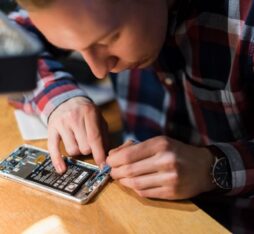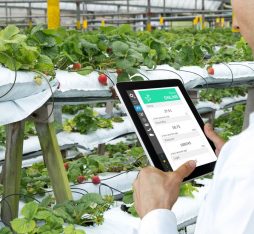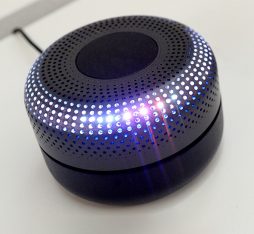An IoT market divided between cellular and non-cellular technologies
The connected objects market and the entire IoT ecosystem is currently divided between long-range technologies and non-cellular short-range technologies. Short-range technologies such as WiFi, Bluetooth, Zigbee and Z-Wave are all available to manufacturers and currently equip a large number of the connected objects on the market. Choosing between cellular and non-cellular technology has a significant impact not only on the end-user, but also on the manufacturer of connected objects, explains Nicolas Ducrot. “In cellular technologies such as 2G or LTE-M, the industrial design process for connected objects may be considered complex by certain manufacturers. “Makers” are faced with having to manage technical and operational complexities; they must assemble numerous electronic components, engage contractually with one or more mobile operators according to the marketing area, and test and ensure end-to-end quality. Manufacturers may then tend to pass the complexity to the end user by choosing short-range non-cellular technologies. These are not always secure, tend to be complex for users to configure, and are always dependent on a third-party Internet connection.” This impacts the end-user when setting up the connected objects (which includes pairing with the complex network, a step that does not exist in IoT long-range networks), and also affects the users’ experience of these objects (unavailability of the third-party connection may render the object ineffective). Although cellular connectivity solutions are available for the connected objects market, at present they are mainly used by companies with experience in using these technologies, a market on which Orange has been present for more than 10 years through its Machine-to-Machine offers. “However, the problem goes beyond the simple choice of which connectivity technology to use; it extends to the entire industrial production model for connected objects, which we must examine in order to simplify the process for the manufacturers of connected objects,” explains Nicolas.
The manufacturer and their design process in the face of fragmented tasks
In the process of designing connected objects via long-range cellular networks, manufacturers find themselves at the heart of an industrial ecosystem where they are responsible for many elements: selecting the IoT communication module and the relationship with its manufacturer, the relationship with the operator(s) to ensure the operation of the connected objects in one or more regions, with the SIM card manufacturers to have the right card available (if applicable), with the providers in charge of hosting the data generated by the objects, with the distributors etc…
Putting himself in the shoes of a “maker” of connected objects, Nicolas shares his analysis of the IoT industry. “It is a question of better understanding the strengths and weaknesses of a model and drawing the right lessons from it so as to contribute to its evolution,” insists Nicolas. “It is not an obvious position. Indeed, the IoT industry is already structured – thousands of new connected objects are appearing each year. In an industrial and commercial context like this, it may be difficult for established players to step back. However, innovating at the very heart of this market’s functions enables us to go faster, to go further.” This experiment, which was conducted for two years, allowed Nicolas and his teams to analyse the functioning of the IoT ecosystem and its industrial model in order to “build a new value proposition, centred on the principle of facilitating the work of connected object manufacturers”.
Simplify the IoT industry model
The “Live Booster” program is the embodiment of this value proposition. Through the Heracles connected module from EBV Elektronik, which is included in this program, the manufacturer has a simple tool that saves time without having to worry about the operational complexities associated with integrating connectivity. “With embedded cellular connectivity, we offer a plug-and-play experience to object makers and, by extension, to their customers. The Heracles module, which is smaller than a euro coin, is an effective answer to simplify the design process for connected objects,” explains Nicolas.
By pre-integrating connectivity into the electronic design stage of the connected object, the manufacturer benefits from a secure, high-performance and competitive connectivity solution that operates over large geographical areas (33 European countries covered with the first module).
Thanks to the combination of a SIM card integrated in the module and a prepaid data plan, this all-in-one solution is profitable for the manufacturers of objects. “The simplification is concrete and immediate,” says Nicolas.
But it does not stop there: “This first module is marketed in Europe by one of the leading distributors of electronic components, EBV Elektronik, whose business is to supply the entire industry. This solution makes it possible to avoid disrupting manufacturers’ procurement habits for components, and thus to easily integrate us into their uses,” says Nicolas.
It is essential that the IoT industry evolves as a whole and adapts to the constraints of the manufacturers of connected objects by eradicating both the technical complexities and the difficulties encountered in the purchase/consumption process.









